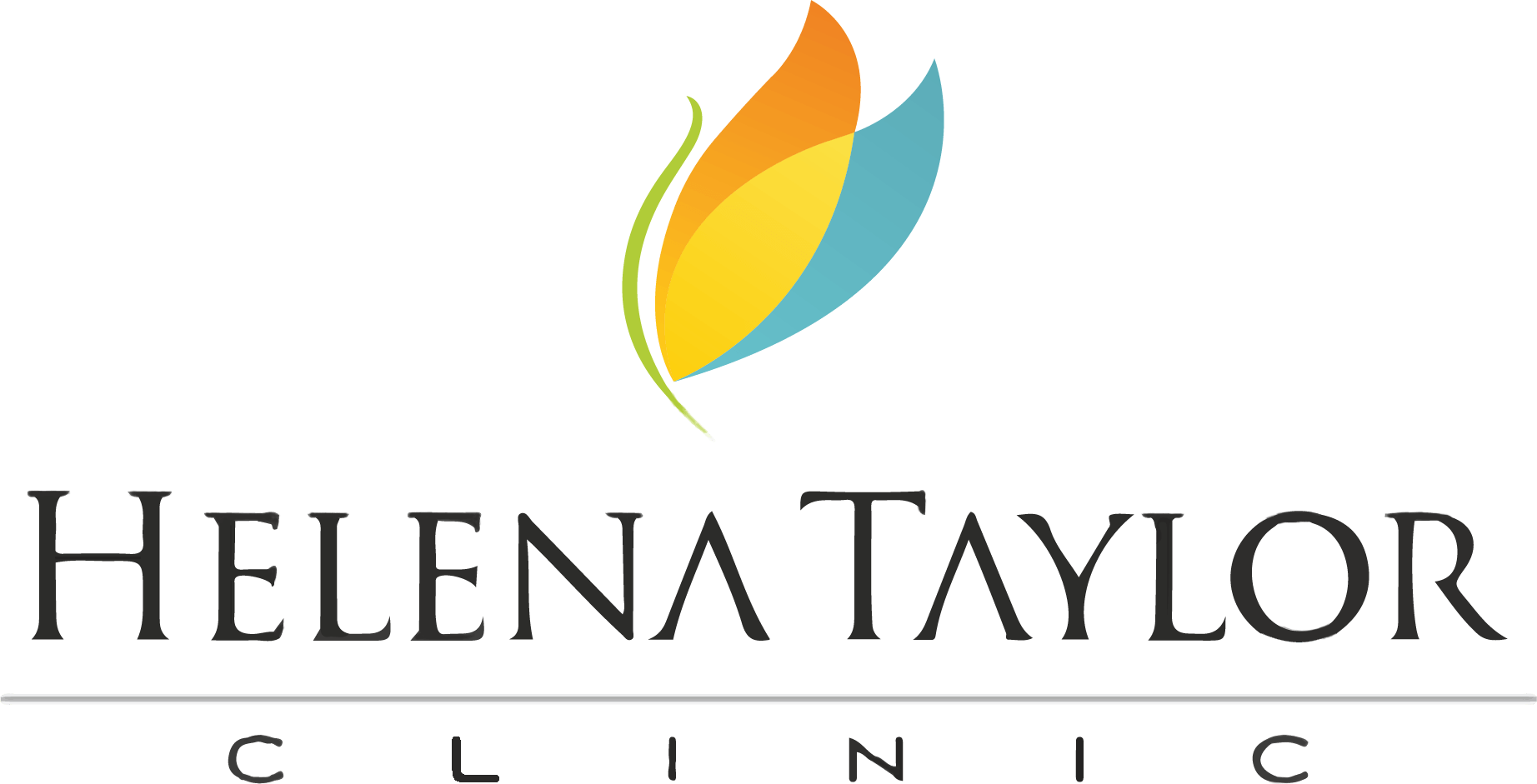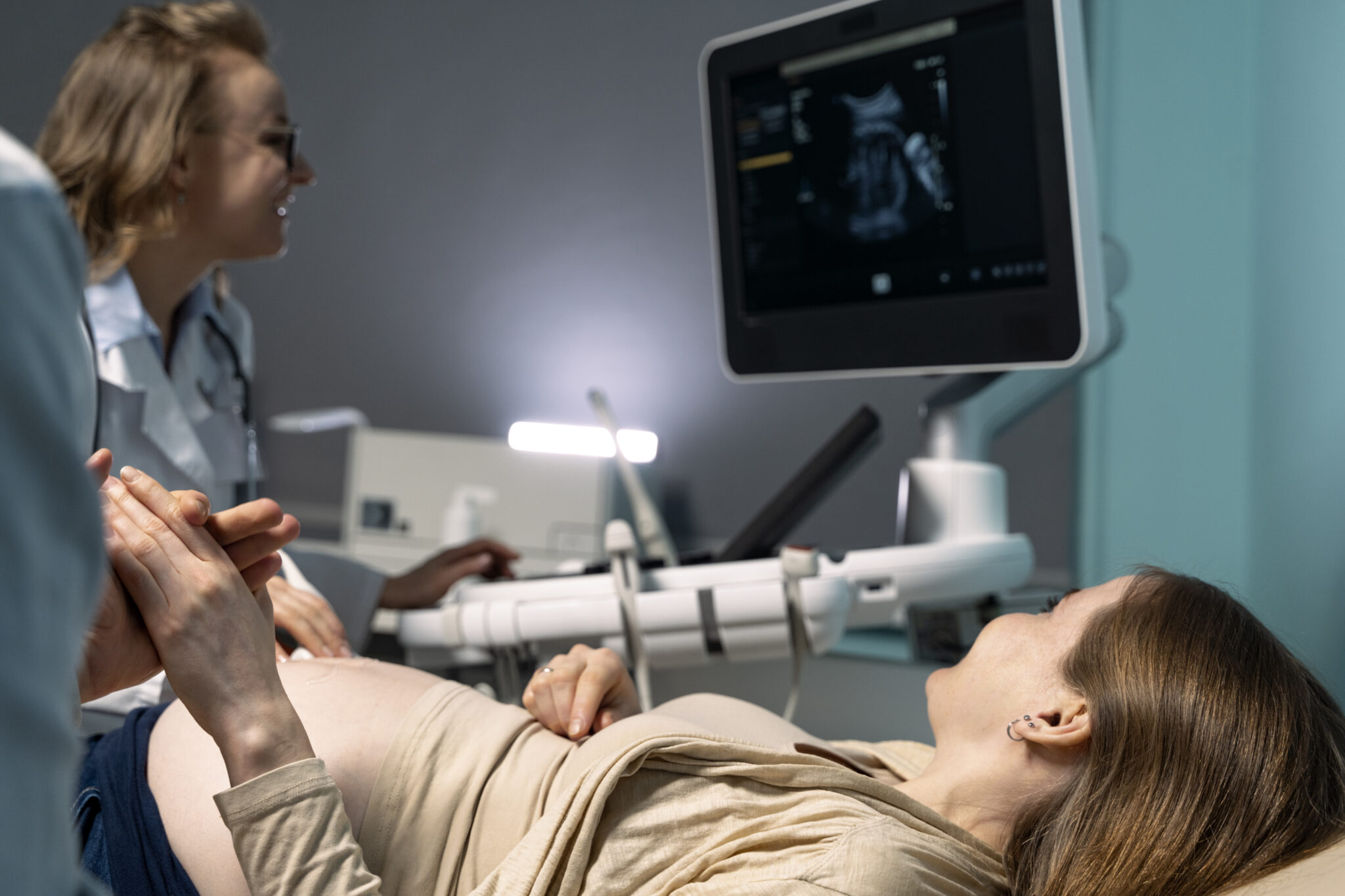Diastasis recti (diastasis rectus abdominis or diastasis) is the separation of the rectus abdominis muscles during and after pregnancy. The rectus abdominis runs vertically along the front of your stomach. It’s frequently referred to as someone’s “six-pack abs.” It’s divided into left and right sides by a band of tissue called the linea alba that runs down the middle. As your uterus expands during pregnancy, the abdominals are stretched and the linea alba thins and pulls apart. This band of tissue gets wider as it’s pushed outward.
Once you deliver your baby, the linea alba can heal and come back together. It’s highly elastic and retracts backs (like a rubber band). When the tissue loses its elasticity from being overstretched, the gap in the abdominals will not close as much as it should. This is diastasis recti.
If you have diastasis, your belly may appear to stick out just above or below the belly button, making you appear pregnant months or years after giving birth. During and after pregnancy, the occurrence of diastasis recti underscores the importance of expert prenatal and postnatal care provided by the best gynaecologist in dubai at Helena Taylor Clinic. Understanding the intricate changes in abdominal muscles and tissue during pregnancy, our specialized team offers personalized guidance and treatment options tailored to your unique needs. At our maternity hospital Dubai, we prioritize maternal health and wellness, ensuring comprehensive support for every stage of your pregnancy journey, including addressing conditions like diastasis recti with expertise and compassion.
Diastasis recti: what are the symptoms?
Symptoms of diastasis recti can vary from person to person and may include:
- Visible bulge or ridge: One of the most noticeable signs of diastasis recti is a visible bulge or ridge running down the middle of the abdomen, especially when the abdominal muscles are engaged or under strain. This bulge may become more prominent during certain activities, such as sitting up from a lying position or performing abdominal exercises.
- Abdominal weakness: Individuals with diastasis recti may experience weakness in the abdominal muscles, particularly in the midline area where the separation occurs. This weakness can affect core stability and may lead to difficulties with certain movements or activities that require abdominal strength.
- Lower back pain: Diastasis recti can contribute to lower back pain due to the weakened abdominal muscles failing to provide adequate support for the spine. The lack of core stability can place additional strain on the lower back, leading to discomfort or pain.
- Poor posture: A weakened abdominal wall can also affect posture, causing the pelvis to tilt forward and the spine to curve excessively. This can result in a posture characterized by an increased arch in the lower back (hyperlordosis) and a protruding abdomen.
- Digestive issues: Some individuals with diastasis recti may experience digestive symptoms, such as bloating, constipation, or difficulty with bowel movements. The separation of the abdominal muscles can affect the normal function of the digestive organs, leading to discomfort or irregularity.
- Pelvic floor dysfunction: Diastasis recti can be associated with pelvic floor dysfunction, including symptoms such as urinary incontinence, pelvic pain, or discomfort during intercourse. The weakened abdominal muscles may contribute to poor pelvic floor support and coordination.
Why does diastasis recti happen?
Diastasis recti occurs primarily due to the stretching and weakening of the connective tissue (linea alba) that runs down the center of the abdomen. This connective tissue holds the rectus abdominis muscles together, forming the “six-pack” muscles. Several factors contribute to this separation:
- Pregnancy: The most common cause of diastasis recti is pregnancy. As the uterus expands to accommodate the growing fetus, it exerts significant pressure on the abdominal muscles. Hormonal changes during pregnancy can also affect the connective tissue, making it more prone to stretching and separation.
- Abdominal muscle weakness: Weakness in the abdominal muscles, often due to factors like sedentary lifestyle, improper exercise techniques, or previous abdominal surgeries, can contribute to diastasis recti. When the muscles are weak, they are less able to support the growing uterus or withstand intra-abdominal pressure, leading to separation.
- Excessive intra-abdominal pressure: Anything that increases pressure within the abdomen can contribute to diastasis recti. This includes activities like heavy lifting, chronic coughing or sneezing, or obesity. The increased pressure strains the abdominal muscles and can cause them to separate over time.
- Genetic predisposition: Some individuals may have a genetic predisposition to develop diastasis recti. Factors such as collagen structure and connective tissue elasticity can influence the likelihood of muscle separation.
- Repeated or improper abdominal exercises: Certain exercises, such as crunches, sit-ups, or intense core workouts, when performed incorrectly or excessively, can strain the abdominal muscles and exacerbate diastasis recti. It’s important to perform exercises that strengthen the core without putting excessive pressure on the abdominal wall.
- Multiple pregnancies: Women who have had multiple pregnancies are at higher risk of developing diastasis recti, as the abdominal muscles may become progressively weakened and stretched with each pregnancy.
- Age: As people age, the elasticity of connective tissues naturally decreases. This can make older adults more susceptible to diastasis recti.
How is it treated?
Treatment for diastasis recti typically involves a combination of exercises, lifestyle modifications, and, in some cases, medical interventions. Here are some common approaches to treating diastasis recti:
- Physical therapy exercises: Physical therapy is often the first line of treatment for diastasis recti. A physical therapist can develop an individualized exercise program focused on strengthening the deep abdominal muscles, including the transverse abdominis and pelvic floor muscles. These exercises may include pelvic tilts, abdominal bracing, pelvic floor exercises, and specific core strengthening movements. Gradually increasing the intensity and complexity of these exercises can help close the gap between the separated abdominal muscles.
- Proper body mechanics: Learning and practicing proper body mechanics is essential for managing diastasis recti and preventing further strain on the abdominal muscles. This may involve techniques for lifting objects correctly, maintaining good posture, and avoiding activities that exacerbate the condition, such as heavy lifting or high-impact exercises.
- Abdominal support garments: Some individuals with diastasis recti find relief from wearing abdominal support garments, such as belly bands or abdominal binders. These garments provide external support to the abdominal muscles, helping to stabilize the area and reduce strain during daily activities.
- Breathing techniques: Specific breathing techniques, such as diaphragmatic breathing or deep belly breathing, can help engage the deep abdominal muscles and promote proper alignment of the abdominal wall. Incorporating these techniques into daily activities and exercises can enhance core stability and support.
- Surgical intervention: In severe cases of diastasis recti that do not respond to conservative treatments, surgical intervention may be necessary. During surgery, the separated abdominal muscles are typically sutured together to restore their integrity and improve abdominal strength. This procedure is known as abdominoplasty or tummy tuck. However, surgery is usually considered a last resort and is typically reserved for individuals with significant functional impairment or cosmetic concerns.
- Nutrition and weight management: Maintaining a healthy diet and weight can support overall healing and recovery from diastasis recti. Adequate hydration, a balanced diet rich in essential nutrients, and maintaining a healthy body weight can promote tissue repair and strengthen the abdominal muscles.
It’s important for individuals with diastasis recti to consult with a pelvic health specialist, specializing in sports medicine or rehabilitation, to develop an appropriate treatment plan tailored to their specific needs and goals. Consistency and patience are key, as it may take time to see improvements in muscle strength and abdominal function.
Diastasis recti does not automatically correlate with weakness or having dysfunction or symptoms. It’s a normal physiological change and adaptation of the body during pregnancy. It is something to consider and have a conversation about postpartum and not something to be fearful about or to be seen as a hindrance to recovery.













